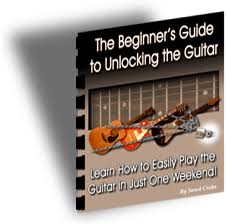Home Theater Speakers
In a typical home theater setup, there should be six home theater speakers: two front speakers, two surround speakers, a center speaker and a subwoofer for the lowest frequency ranges. There are two ways to obtain all these speakers: buying each of them seperately, or buying a home theater speaker set.
Home Theater Speaker Sets:
If you're low on budget, you should think about one of these. But remember: don't spare on speakers, they're very important. There are lots of cheap home theater speaker sets on the market, but you shouldn't buy one of them, because these are of poor quality. Usually, sets manufactured by well-know brands (Klipsch, Bose, for example) produce a decent sound. This way you'll still not spend as much as you would on separate speakers.
If you're thinking about buying one of these sets, read our article on home theatres in a box.
Going One By One:
So, you're serious about your future home theater, and want to spend a little more on the speakers? Buying speakers separately has many advantages: it's the best quality you can have, and another, often overlooked advantage is that you can don't have to buy the whole set at a time, so if you haven't got the money, you can still have high quality speakers in your setup.
Your front speakers should be the strongest members in your home theater speaker setup. If you have a small room, choose bookshelf speakers. Larger rooms will require larger speakers; in this case, powerful floor-standing speakers is the choice to go with.
I often hear that it is advisable to have the exact same speakers for surround and front. This is true, but it's not very practical: movie sound mixes don't use surround speakers as much as they use the front speakers. So, you can choose smaller and less-powerful speakers for your surround setup, it won't make significant differences anywhere except your wallet.
The surround and front units were good, old-fashioned hi-fi speakers used for a home theater setup. The case is different with our center speaker. It's a special speaker with unique frequency response. If it's possible, have the center speaker from the same brand as the surround and front speakers. This unit is also often overlooked, but it's very important, because this speaker is used for voices and talking in a sound mix.
The subwoofer is used to reproduce the lower frequencies. Sometimes, it's optional: the front speakers can be powerful enough to rock the house, and an additional subwoofer is not needed. However, in larger rooms, it's inevitable. Subwoofers require lots of power, and in most cases, they require their own power input (these are called "active subwoofers"). - 18758
Home Theater Speaker Sets:
If you're low on budget, you should think about one of these. But remember: don't spare on speakers, they're very important. There are lots of cheap home theater speaker sets on the market, but you shouldn't buy one of them, because these are of poor quality. Usually, sets manufactured by well-know brands (Klipsch, Bose, for example) produce a decent sound. This way you'll still not spend as much as you would on separate speakers.
If you're thinking about buying one of these sets, read our article on home theatres in a box.
Going One By One:
So, you're serious about your future home theater, and want to spend a little more on the speakers? Buying speakers separately has many advantages: it's the best quality you can have, and another, often overlooked advantage is that you can don't have to buy the whole set at a time, so if you haven't got the money, you can still have high quality speakers in your setup.
Your front speakers should be the strongest members in your home theater speaker setup. If you have a small room, choose bookshelf speakers. Larger rooms will require larger speakers; in this case, powerful floor-standing speakers is the choice to go with.
I often hear that it is advisable to have the exact same speakers for surround and front. This is true, but it's not very practical: movie sound mixes don't use surround speakers as much as they use the front speakers. So, you can choose smaller and less-powerful speakers for your surround setup, it won't make significant differences anywhere except your wallet.
The surround and front units were good, old-fashioned hi-fi speakers used for a home theater setup. The case is different with our center speaker. It's a special speaker with unique frequency response. If it's possible, have the center speaker from the same brand as the surround and front speakers. This unit is also often overlooked, but it's very important, because this speaker is used for voices and talking in a sound mix.
The subwoofer is used to reproduce the lower frequencies. Sometimes, it's optional: the front speakers can be powerful enough to rock the house, and an additional subwoofer is not needed. However, in larger rooms, it's inevitable. Subwoofers require lots of power, and in most cases, they require their own power input (these are called "active subwoofers"). - 18758




